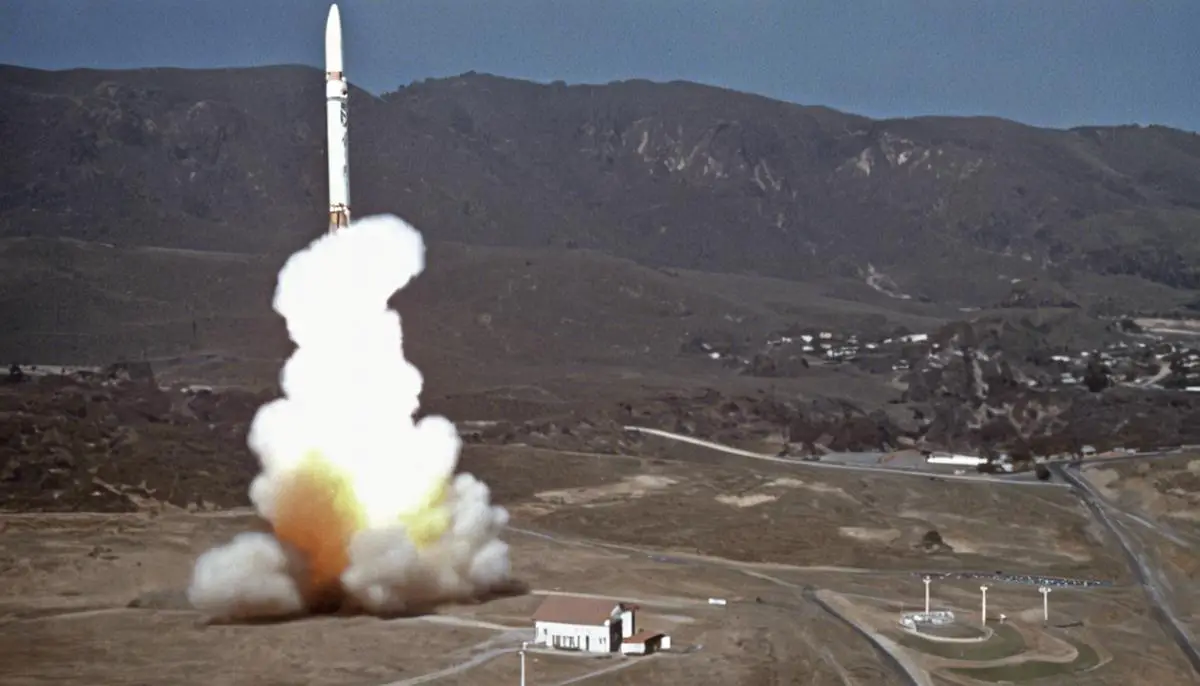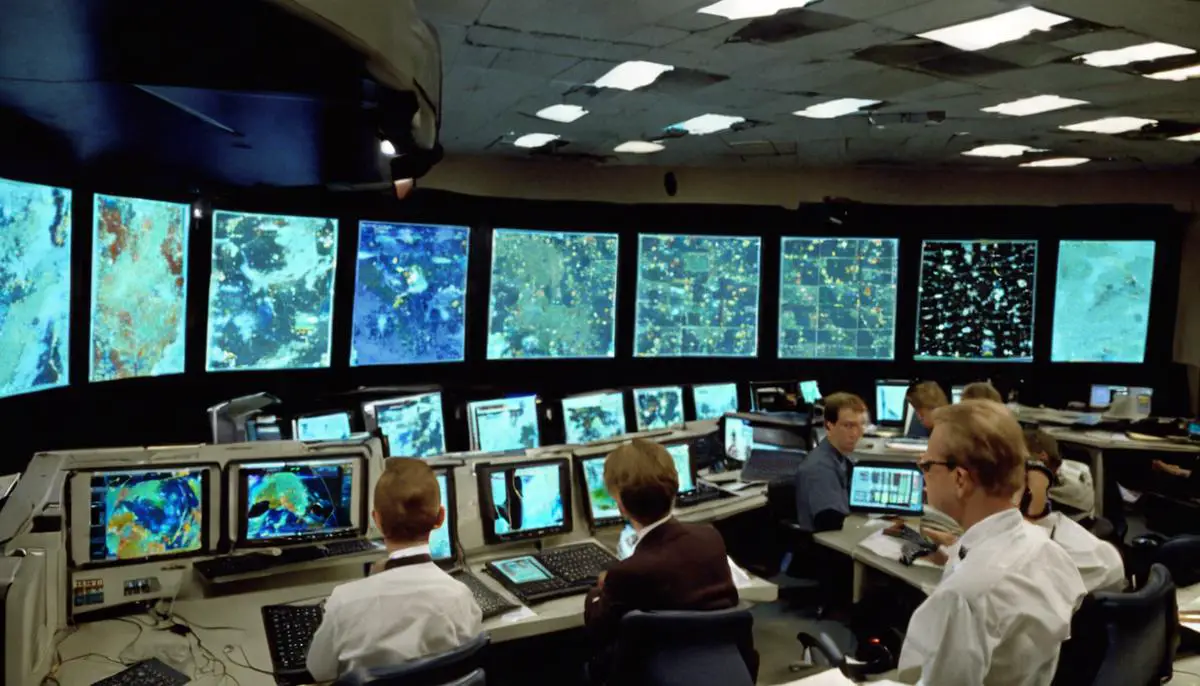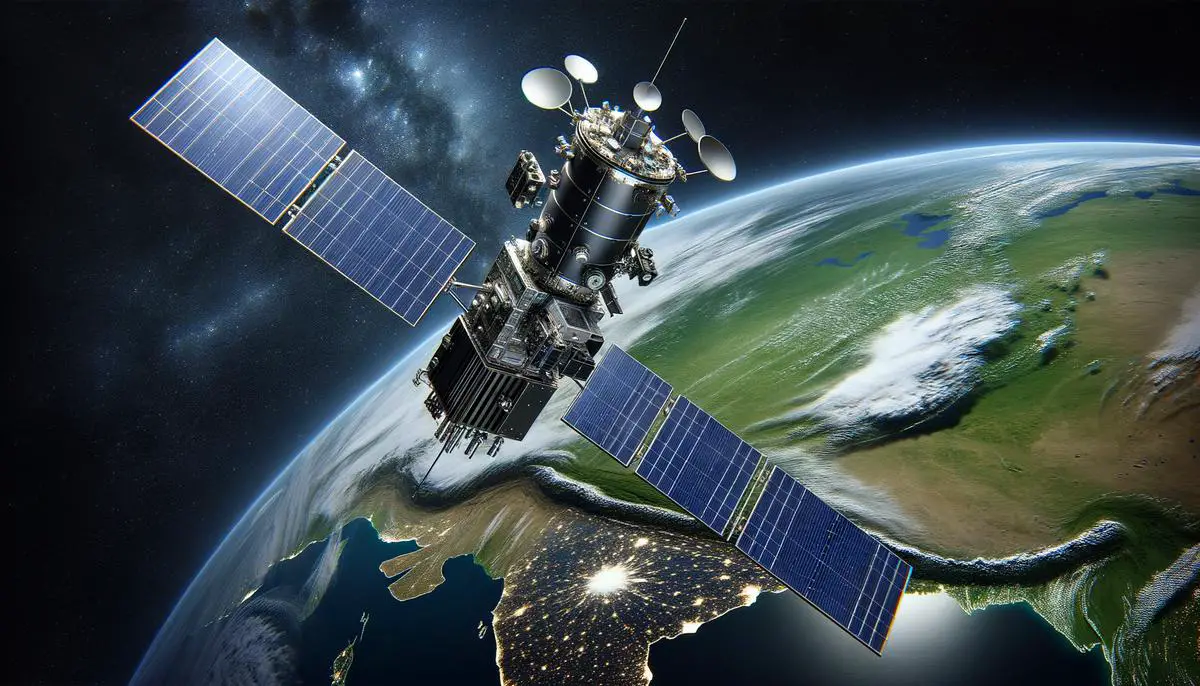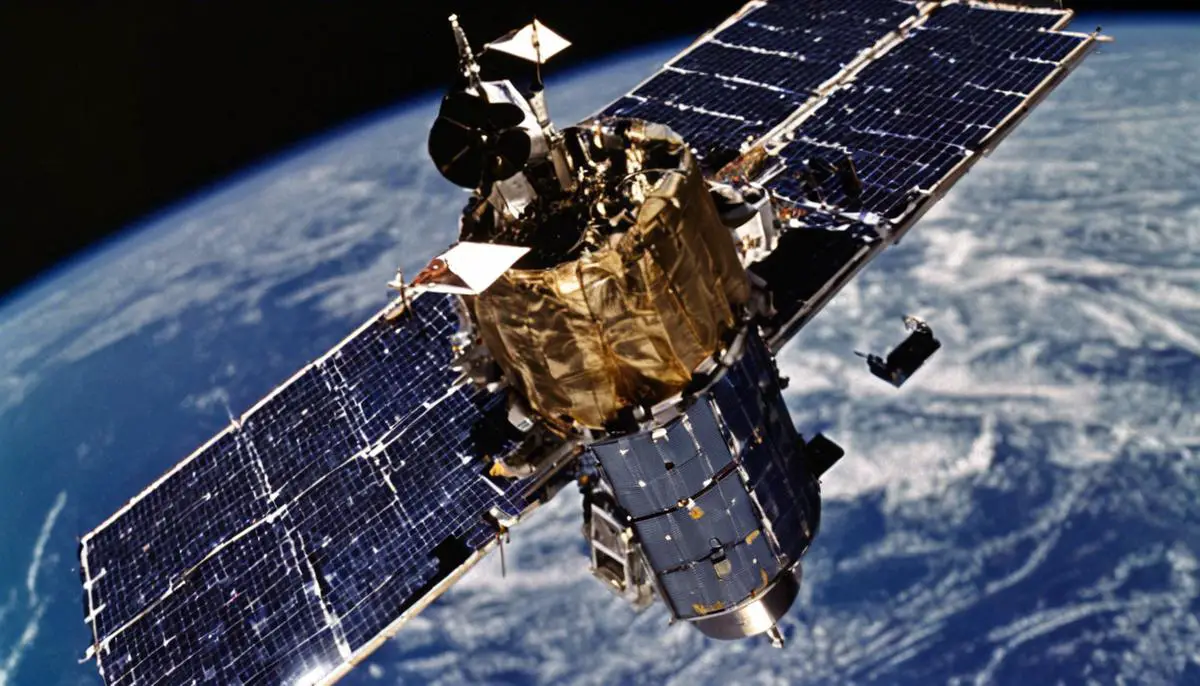Historical Context of Nimbus 3
Launched by NASA in 1969 from Vandenberg Air Force Station in California, Nimbus 3 was a significant development in meteorological technology. Equipped with an infrared spectrometer, this device allowed scientists to measure atmospheric temperatures with improved accuracy and detail across different layers of the Earth's atmosphere. It also enabled the detection of a wide spectrum of electromagnetic radiation, contributing to a deeper understanding of atmospheric structures.
Nimbus 3 also featured real-time imaging technology, enabling scientists to observe global cloud movements. This capability was instrumental in improving weather forecasting techniques, moving the field from prediction to a more precise science.
Debuting in an era when space technology was just beginning to advance, Nimbus 3 introduced the world to the possibilities of advanced atmospheric monitoring from space. Before its launch, weather forecasting relied on less reliable methods and data points, often involving guesswork. This satellite demonstrated the potential for more accurate forecasting.
Despite a promising start, Nimbus 3's mission was halted by technical malfunctions two months after launch, resulting in its early termination in 1972. However, the data gathered during its operational lifespan laid the foundation for today's sophisticated weather prediction models.
Nimbus 3's impressive lineage showcases how NASA's ambitious satellite series reshaped meteorological methods. It demonstrated the critical role of satellites in gathering atmospheric data, reinforcing the need for technological growth and setting the blueprint for contemporary weather monitoring systems.
From its substantial contribution to understanding Earth's atmosphere to enhancing global monitoring capabilities, Nimbus 3 represents a significant chapter in the history of meteorology. Its legacy continues to inspire scientists and researchers to advance their exploration of atmospheric phenomena and unlock new layers of our planet's complex weather patterns.

Operational Challenges and Solutions
During its pioneering journey, Nimbus 3 encountered operational hurdles that highlighted the complex nature of space missions. Two months after launch, a series of technical malfunctions began to unfold, leading to the mission's premature termination in 1972. These challenges provided critical learning opportunities that would shape the trajectory of future satellite missions.
The mechanical issues faced by Nimbus 3 varied in complexity and impact, from instrumental failures to system malfunctions, each contributing to a diminished operational capacity. Notably, one of the satellite's key instruments, designed to record atmospheric temperatures and cloud movements, failed. This failure compromised the mission's core objectives and exposed the vulnerabilities inherent in the early era of space technology.
The consequences of these technical failures extended beyond Nimbus 3, impacting the broader goals of meteorological research from space. However, the mission's termination catalyzed an introspective examination within NASA and its collaborating entities. The subsequent inquiry and reflection led to significant advancements in satellite design, engineering, and operational protocols.
Learning from Nimbus 3's vulnerabilities, engineers and scientists worked to improve satellite robustness. Emphasizing redundancy in critical systems, enhancing diagnostic capabilities to preempt failure, and improving pre-launch testing regimes became central tenets of subsequent designs. These enhancements aimed to mitigate the risks of singular failures crippling entire missions, laying a foundation of resilience for future satellites.
Moreover, Nimbus 3's challenges underscored the need for real-time monitoring and problem-solving capabilities in orbit. This realization propelled advancements in ground-based control systems and satellite communication strategies, ensuring swift responses to operational anomalies. The evolution of these support systems has since become a cornerstone of satellite mission management, equipping teams with the tools necessary to navigate the unpredictable nature of space environments.
The lessons drawn from Nimbus 3's operational hurdles resonate through the history of meteorological satellite missions. They serve as reminders of both the fragility and resilience of human ingenuity when confronting the unknowns of space. These narratives of challenge and response have enriched technical knowledge and fortified the spirit of exploration that propels humanity forward.
While Nimbus 3 may have left the skies sooner than anticipated, its legacy endures through the countless satellites that now orbit our planet. Each new mission carries with it the wisdom gained from its predecessors, ensuring that our quest to understand Earth's atmospheric mysteries is always advancing, resilient in the face of uncertainty. Through operational challenges come solutions, and in solutions, we find progress—a testament to the enduring impact of Nimbus 3 on the field of meteorological science.
Impact on Meteorological Industry
Reflecting on the monumental journey of Nimbus 3, it's important to explore the cascade of impacts it had on the meteorological industry. The functionalities introduced by this iconic satellite highlighted the potential for atmospheric monitoring, altering our approach to deciphering Earth's weather patterns. The subsequent precision in weather prediction, nuanced understanding of atmospheric dynamics, and accelerated development in satellite technologies underscore Nimbus 3's significant influence on meteorological methodologies and the broader industry.
At the forefront of Nimbus 3's legacy is the improved accuracy of weather forecasts. By providing scientists with detailed atmospheric temperature measurements and cloud movement data, it bridged the gap between speculative meteorology and evidence-based forecasts. The derivative models and algorithms from its dataset have bolstered predictive capabilities, paving the way for practices like week-long forecasting and real-time storm tracking. Such advancements, originating from the early explorations of Nimbus 3, have optimized agricultural planning, disaster management, and safeguarded lives against the variability of nature.
Moreover, the innovations sparked by Nimbus 3 catalyzed advancements in atmospheric monitoring. Its deployment of sophisticated instruments in space signaled to the meteorological community the importance of advanced exploration of Earth's climatic systems. This led to the design of versatile satellites equipped with multifaceted sensing technologies, from measuring ocean salinity and ice caps to tracking air quality and ozone levels. Thus, Nimbus 3 expanded our atmospheric knowledge base and framed the template for integrated Earth observation systems.
In the wake of Nimbus 3's journey, the meteorological satellite market has experienced significant growth. The demand for satellite-enhanced weather information has increased, driven by a global economy increasingly attuned to the effects of weather and climate change. The satellite meteorology field has evolved into a vibrant marketplace, filled with innovative solutions and collaborative international endeavors aiming to strengthen our resilience against climatic uncertainties. This growth is characterized by the emergence of public-private partnerships, expanding satellite launch services, and the development of specialized meteorological payloads, each contributing to the rich mosaic Nimbus 3 initiated.
Furthermore, this satellite's contributions have laid a robust foundation for future ventures into space-based weather monitoring. Each subsequent generation of weather satellites builds upon the technical and operational legacies of Nimbus 3, pushing the boundaries of what can be achieved. From enhancing computational methodologies to adopting artificial intelligence for data analysis, the spirit of innovation that Nimbus exemplified continues to inspire and challenge.
The narrative of Nimbus 3 is a testament to human curiosity and our relentless quest for knowledge. Its impacts—spanning enhanced weather prediction accuracy, enriching atmospheric monitoring, and stimulating the evolution of meteorological satellites—resonate through time. As we move forward, designing sophisticated observation platforms and refining predictive models, we anchor our efforts in the pioneering spirit that Nimbus 3 championed. The meteorological industry today stands on the shoulders of this giant, reaching toward the uncertainty of our climate's future with improved tools, technologies, and a surer footing, thanks to the path Nimbus 3 carved out in the cosmos above.

Technological Advancements Post-Nimbus 3
The landscape of meteorological satellites post-Nimbus 3 illustrates a continuous technological evolution, constantly shifting the paradigm of atmospheric exploration. The advancements that followed Nimbus 3 have shaped a future where technology's march has accelerated, becoming more refined, intuitive, and capable of unraveling the Earth's atmospheric enigmas.
One cannot explore these advancements without noting the significant progress in atmospheric temperature measurement. Today, satellites in Earth's orbit deploy hyperspectral imaging technology, a remarkable leap from the infrared spectrometry of the Nimbus era. This technology categorizes and quantifies radiation in thousands of spectral bands, allowing for an intricate analysis of atmospheric temperatures. The resulting data is highly detailed and accurate, offering insights that bolster the precision of climate models and forecasts. Such advancements stand as a testament to the ingenuity and forward momentum sparked by Nimbus 3, pushing the boundaries of our understanding.
The narrative extends into the realm of cloud tracking, where innovations post-Nimbus 3 have been revolutionary. The advent of geostationary satellites—stationary in relation to Earth's rotation—has provided meteorologists with a continual eye in the sky. These satellites offer real-time imagery of cloud dynamics over specific geographical areas, capturing the genesis and movement of weather systems with remarkable fidelity. This perpetual watch over the atmosphere has enhanced forecasting abilities, enabling timelier warnings for severe weather phenomena.
Further pushing the frontier of meteorological science is the incorporation of Artificial Intelligence (AI) and the Internet of Things (IoT). AI algorithms, trained on decades' worth of climate data, now excel at identifying subtle patterns. These algorithms predict weather changes and climatic phenomena with a high level of accuracy. Simultaneously, IoT devices scattered across the globe gather and relay live data on temperature, humidity, air quality, and more, feeding this information into sophisticated predictive models. This combination of historical satellite data, contemporary ground observations, and cutting-edge computational prowess exemplifies a synergistic leap in forecast reliability and atmospheric understanding.
The tale of technological advancements in meteorology post-Nimbus 3 is one of relentless pursuit and perpetual curiosity. The current generation of meteorological satellites bears little resemblance to their storied predecessor, yet they are indelibly linked by a lineage of innovation. Each new development in atmospheric temperature measurement, each advancement in cloud tracking, and every integration of AI and IoT stands on the foundational achievements of Nimbus 3. Together, they compose an ever-growing mosaic of knowledge—both a tribute to past ingenuities and a beacon for future explorations into the earth's atmospheric mysteries.
As we reflect on the strides taken since Nimbus 3's tenure, it becomes clear that our journey into meteorological discovery is fueled by an undying torch—a torch passed from one generation of scientists and engineers to the next, illuminating the uncharted frontiers of atmospheric science. In this continuum of progress, each technological leap not only enhances forecasting abilities but also deepens our collective understanding of the planet's dynamic climate, ensuring that humanity remains resilient and prepared for the challenges posed by nature.

Challenges in Modern Meteorological Satellite Industry
While the Nimbus 3 saga underlines the incredible potential and historical significance of meteorological satellites, the road forward is fraught with contemporary challenges that must be navigated. In the modern arena of the meteorological satellite industry, stakeholders grapple with issues that are financial, environmental, and digital in nature. These challenges catalyze a renewed commitment to innovation and sustainability within the sector.
Foremost among these challenges is the high costs associated with the deployment and maintenance of satellite systems. Developing, launching, and sustaining satellites requires a substantial financial investment, encompassing not only the state-of-the-art technology aboard these celestial emissaries but also the rocket launches that ferry them to their orbital positions. Despite advancements in satellite technology, which have incrementally reduced costs over time, the financial barriers to entry remain significant. This economic backdrop emphasizes the importance of creating more cost-effective launch strategies, fostering public-private partnerships, and exploring scalable satellite designs to democratize access to these vital tools in our meteorological arsenal.
Moreover, the growing issue of space debris presents a tangible threat to the operational integrity of meteorological satellites. As humanity's celestial footprint expands, so too does the accumulation of orbital debris—spent rocket stages, defunct satellites, and fragments from disintegration, erosion, and collisions—each piece a potential risk for catastrophic collisions. Given that meteorological satellites share these crowded skies, the risk of damage from space debris is a constant concern. Tackling this problem demands innovative solutions such as improved debris tracking systems, the development of self-deorbiting satellite technology, and international collaboration on space traffic management to ensure the long-term sustainability of space activities.
In addition to physical challenges, the meteorological satellite sector also contends with the specter of cybersecurity threats. The constellation of satellites circling overhead, crucial to predicting weather calamities and illuminating patterns in our atmosphere, equally serves as a target for malevolent cyber activities. The prospect of hackers infiltrating these systems to disrupt data flows, falsify weather data, or even disable satellites constitutes a significant challenge in an era increasingly defined by digital threats. Addressing these cybersecurity challenges is essential for maintaining the reliability and trustworthiness of weather forecasting systems. This necessitates the deployment of robust cybersecurity measures, continuous monitoring for suspicious activities, and strong international cooperation to safeguard our celestial guardians.
Each of these challenges—financial, environmental, or digital—illuminates the path forward for the meteorological satellite industry. By embracing innovation to reduce costs, fortifying our assets against orbital debris, and shielding our satellites from cyber threats, the industry reaffirms its commitment to safeguarding this crucial window into our planet's weather systems and climate trends. The legacy of Nimbus 3 and its descendants thrives not only in the advanced technologies they bequeath but also in the adaptability and resilience of the global community that supports them. In the enduring quest to harness the potential of meteorological satellites for humanity's benefit

![]()
